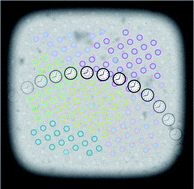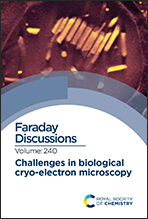Maintaining the momentum in cryoEM for biological discovery†
Abstract
Cryo-electron microscopy (cryoEM) has been transformed over the last decade, with continual new hardware and software tools coming online, pushing the boundaries of what is possible and the nature and complexity of projects that can be undertaken. Here we discuss some recent trends and new tools which are creating opportunities to make more effective use of the resources available within facilities (both staff and equipment). We present approaches for the stratification of projects based on risk and known information about the projects, and the impacts this might have on the allocation of microscope time. We show that allocating different resources (microscope time) based on this information can lead to a significant increase in ‘successful’ use of the microscope, and reduce lead time by enabling projects to ‘fail faster’. This model results in more efficient and sustainable cryoEM facility operation.

- This article is part of the themed collection: Challenges in biological cryo electron microscopy


 Please wait while we load your content...
Please wait while we load your content...